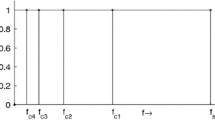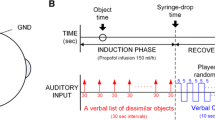Abstract
Phase synchronization analysis has been demonstrated to be a useful method to infer brain function and neural activity based on electroencephalography (EEG) signals. The phase locking value (PLV) is one of the most important tools for phase synchronization analysis. Although the traditional method (TM) to calculate PLV, which is based on the Hilbert transform, has been applied extensively, some of methodological problems of TM have not been solved. To address these problems, this paper proposes an improved method (IM) to calculate the PLV based on the Hilbert–Huang transform. For the IM, the Hilbert–Huang transform, instead of the Hilbert transform, is used to process non-stationary EEG signals and the empirical mode decomposition, not band-pass filter, is used to get target frequency band. The performance of the IM is evaluated by comparing normal and hypoxia EEG signals. The PLVs are used as features for a least squares support vector machine to recognize normal and hypoxia EEG. Experimental results show that the PLVs calculated by the IM can distinguish the EEG signals better than those calculated by TM.







Similar content being viewed by others
Explore related subjects
Discover the latest articles, news and stories from top researchers in related subjects.References
Puthankattil Subha D, Joseph Paul K, Rajendra Acharya U et al (2010) EEG signal analysis: a survey. J Med Syst 34(2):195–212
Pachori RB, Sircar P (2008) EEG signal analysis using FB expansion and second-order linear TVAR process. Signal Process 88(2):415–420
Cinar Eyup, Sahin Ferat (2013) New classification techniques for electroencephalogram (EEG) signals and a real-time EEG control of a robot. Neural Comput Appl 22(1):29–39
Polat K, Gunes S (2007) Classification of epileptiform EEG using a hybrid system based on decision tree classifier and fast Fourier transform. Appl Math Comput 187(2):1017–1026
Guo L, Rivero D, Pazos A (2010) Epileptic seizure detection using multiwavelet transform based approximate entropy and artificial neural networks. J Neurosci Methods 193(1):156–163
Akin M (2002) Comparison of wavelet transform and FFT methods in the analysis of EEG signals. J Med Syst 26(3):241–247
Cvetkovic Dean, Übeyli Elif Derya, Cosica Irena (2008) Wavelet transform feature extraction from human PPG, ECG, and EEG signal responses to ELF PEMF exposures: a pilot study. Digit Signal Process 18(5):861–874
Sun Junfeng, Hong Xiangfei, Tong Shanbao (2012) Phase synchronization analysis of EEG signals: an evaluation based on surrogate tests. IEEE Trans Biomed Eng 59(8):2254–2263
Varela Francisco, Lachaux Jean-Philippe, Rodriguez Eugenio, Martinerie Jacques (2001) The brain web: phase synchronization and large-scale integration. Nat Rev Neurosci 2(4):229–239
Fell J, Axmacher N (2011) The role of phase synchronization in memory processes. Nat Rev Neurosci 12(2):105–118
Sun Junfeng, Small Michael (2009) Unified framework for detecting phase synchronization in coupled time series. Phys Rev E 80(4):046219
Aydore S, Pantazis D, Leahy RM (2013) A note on the phase locking value and its properties. Neuroimage 74(2):231–244
Lachaux Jean-Philippe, Rodriguez Eugenio, Martinerie Jacques et al (1999) Measuring phase synchrony in brain signals. Hum Brain Mapp 8(4):194–208
Wu W, Sun J, Jin Z et al (2011) Impaired neuronal synchrony after focal ischemic stroke in elderly patients. Clin Neurophysiol 122(1):21–26
Yang Q, Jiang D, Sun J et al (2010) Cortical synchrony change under mental stress due to time pressure. In: Proc. 3rd Int Conf Biomed Eng Informat, Yantai, pp 2004–2007
Park C, Worth RM, Rubchinsky LL (2010) Fine temporal structure of beta oscillations synchronization in subthalamic nucleus in Parkinson’s disease. J Neurophysiol 103(5):2707–2716
Stam CJ, de Haan W, Daffertshofer A et al (2009) Graph theoretical analysis of magnetoencephalography functional connectivity in Alzheimer’s disease. Brain 132(1):213–224
Liu Zhigang, Sun Wanlu, Zeng Jiajun (2013) A new short-term load forecasting method of power system based on EEMD and SS-PSO. Neural Comput Appl 22(1):1–11
Huang Norden E, Shen Zheng, Long Steven R et al (1998) The empirical mode decomposition and Hilbert spectrum for nonlinear and non-stationary time series analysis. Proced R Soc Lond 454(1971):903–995
Echeverría JC, Crowe JA, Woolfson MS et al (2001) Application of empirical mode decomposition to heart rate variability analysis. Med Biol Eng Comput 39(4):471–479
Hyvärinen A, Oja E (2000) Independent component analysis: algorithms and applications. Neural Netw 13(4–5):411–430
Gao Junfeng, Lin Pan, Yang Yong, Wang Pei, Zheng Chongxun (2010) Real-time removal of ocular artifacts from EEG based on independent component analysis and manifold learning. Neural Comput Appl 19(8):1217–1226
Meng Hu, Jiaojie Li, Guang Li, et al (2006) Classification of normal and hypoxia EEG based on approximate entropy and Welch power-spectral-density. In: Proc. of International Joint Conference on Neural Networks, Vancouver BC, pp 3218–3222
Lima Clodoaldo A M, Coelho André L V, Zuben Fernando J Von (2009) Pattern classification with mixtures of weighted least-squares support vector machine experts. Neural Comput Appl 18(7):843–860
Meng Hu, Liang Hualou (2012) Adaptive multi scale entropy analysis of multivariate neural data. IEEE Trans Biomed Eng 59(1):12–15
Rehman N, Mandic DP (2010) Multivariate empirical mode decomposition. Proc R Soc Am 466A:1291–1302
Acknowledgments
Part of this work was supported by National Natural Science Foundation of China (Grant No. 60901080), National High-tech R and D Program of China (863 Program, Grant No. 2009AA010314), and China Postdoctoral Science Foundation (Grant No. 20100480219).
Author information
Authors and Affiliations
Corresponding authors
Rights and permissions
About this article
Cite this article
Zhang, J., Wang, N., Kuang, H. et al. An improved method to calculate phase locking value based on Hilbert–Huang transform and its application. Neural Comput & Applic 24, 125–132 (2014). https://doi.org/10.1007/s00521-013-1510-z
Received:
Accepted:
Published:
Issue Date:
DOI: https://doi.org/10.1007/s00521-013-1510-z




